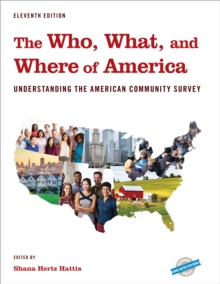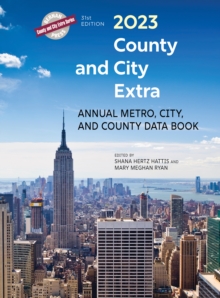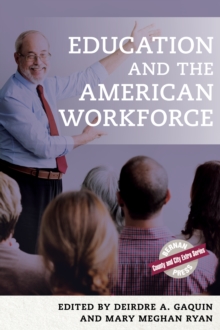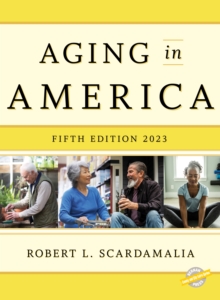
Education and the American Workforce PDF
Edited by Deirdre A. Gaquin, Mary Meghan Ryan
Part of the County and City Extra Series series
- Information
Description
In a time of changing technology and cultural shifts, it is difficult to measure some aspects of the workforce. Education and the American Workforce brings together a comprehensive collection of employment and education information from federal statistical agencies. This publicationis a compilation of data about employment and education from federal statistical agencies. The Census Bureau is the leading source of quality data about the nation's people and economy. The Bureau of Labor Statistics (BLS) is the principal federal agency responsible for measuring labor market activity, working conditions, and price changes in the economy. Together, these agencies produce a wealth of information about the American workforce.
Education and the American Workforce includes information about the jobs that people holdthe occupations that they pursue and the industries where they workand the education levels that people have attained. The geographic location of jobs is important. People often move to locations where jobs are plentiful, moving away from areas where jobs have decreased as technology and trends have changed. The education level of a local population can have an impact on the type of jobs available, with employers establishing businesses where they expect to find employees with appropriate educational credentials.
This book uses the American Community Survey (ACS) to provide data on jobs and education in states, metropolitan areas, counties, cities, and congressional districts. The local area detail is necessarily less specific than the national data but the occupation categories use the same SOC categorization, grouped to protect the respondents' privacy. These sections include ACS data about the labor force, educational attainment, and field of degree, often by age, gender, race, and Hispanic origin. Also included are some personal and household characteristics that are relevant to employment and education, such as health insurance and computer access.
Some examples of interesting data found inside Education and the American Workforce include:
- With no formal educational requirement and a median salary of $22,680, 4.5 million people are employed as retail salespersons, the most of any single occupation. Cashiers and food preparation/serving workers account for another 3.5 million each. There are 2.9 million registered nurses, the most numerous of occupations that require a bachelor's degree.
- The biggest numeric decline is expected for Postal Service mail carriers, dropping by about 78,000 in ten years. When combined with other Postal Service occupationssuch as clerks, sorters, postmasters, and othersa decline of 140,000 jobs is expected for the Postal Service.
- Among the 75 largest counties, Bronx County, NY had the highest number of residents age 25 and over with less than a high school diploma at 29.4 percent while Montgomery County, PA had the lowest percentage at 6.2 percent.
- Meanwhile, New York County, NY and Fairfax County, VA had the highest percentage of residents with a bachelor's degree or higher at 59.9 percent followed by Montgomery County, MD at 57.9 percent among the 75 largest counties. Nationally, between 2011 and 2015, 29.8 percent of the population had a bachelor's degree or higher.
Information
-
Download Now
- Format:PDF
- Pages:350 pages
- Publisher:Bernan Press
- Publication Date:20/12/2017
- Category:
- ISBN:9781598889529
Information
-
Download Now
- Format:PDF
- Pages:350 pages
- Publisher:Bernan Press
- Publication Date:20/12/2017
- Category:
- ISBN:9781598889529



